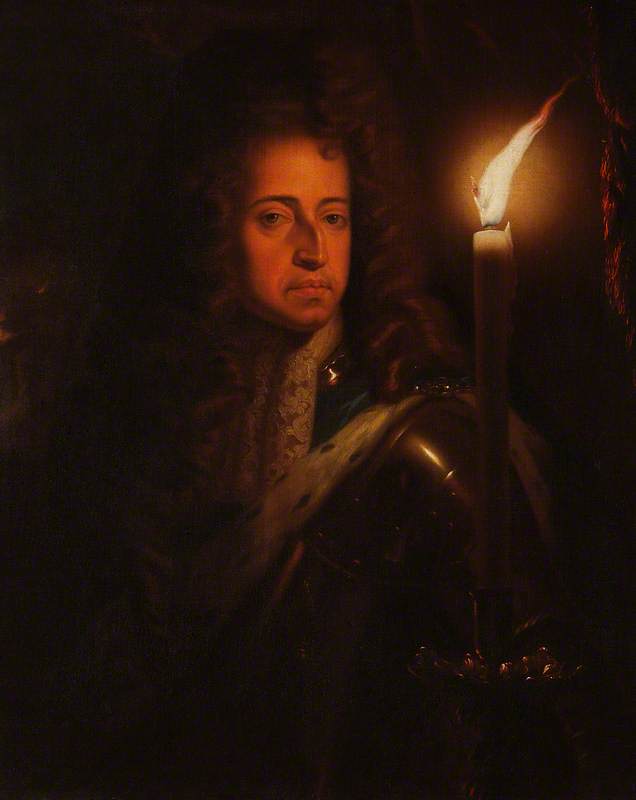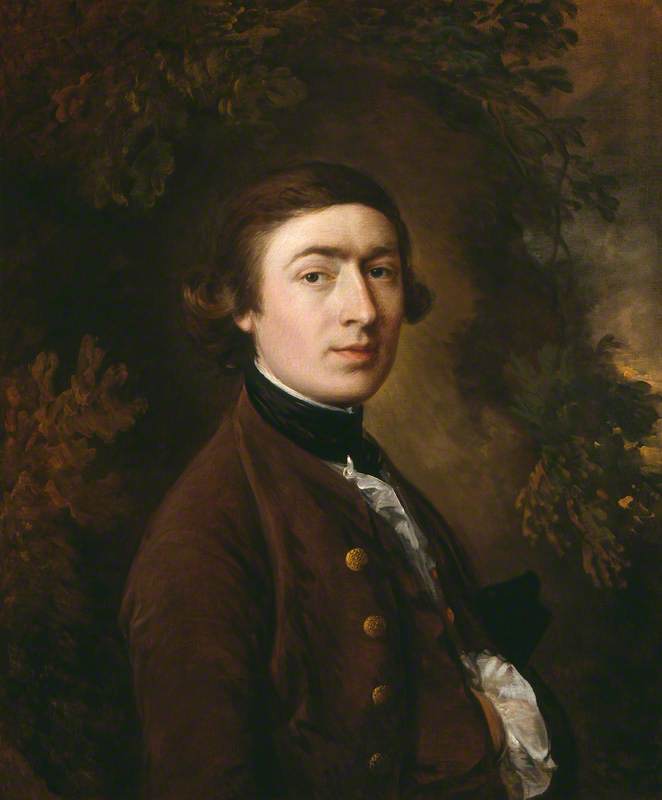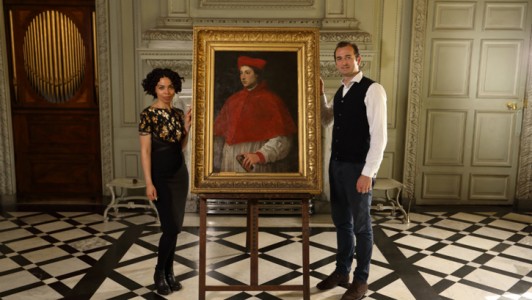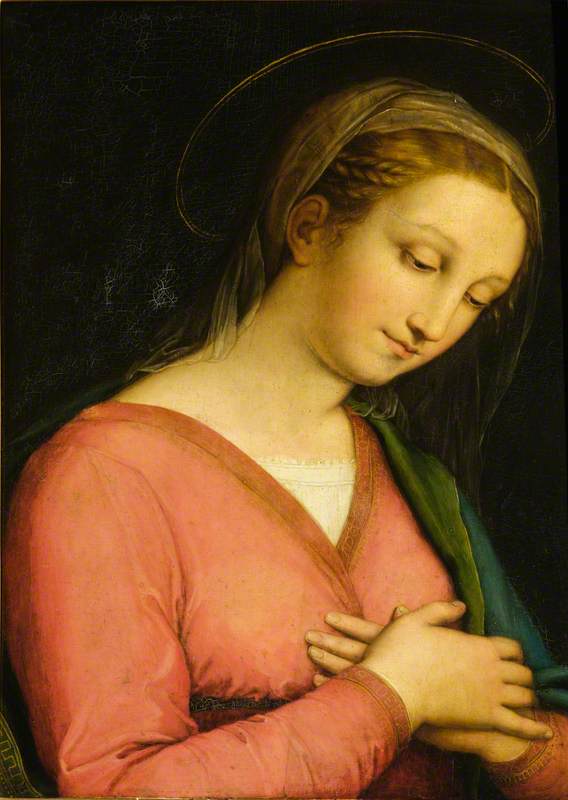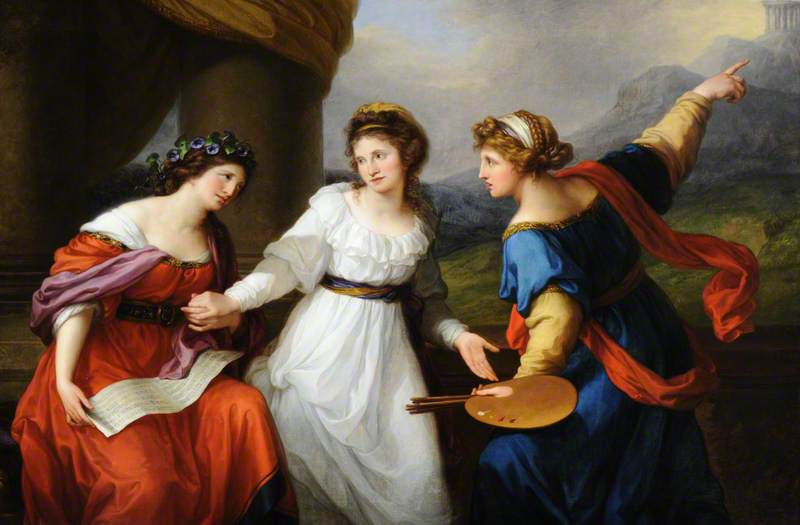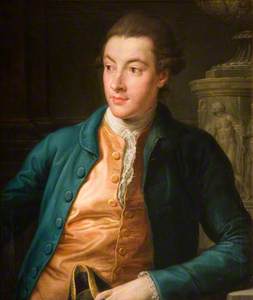A few years ago when researching the work of the eighteenth-century Italian painter Pompeo Batoni (1708–1787) in the Heinz Archive and Library at the National Portrait Gallery in London, I was delighted to find a portrait by the artist hitherto unknown to me. In the Public Catalogue Foundation volume devoted to Oil Paintings in Public Ownership in Staffordshire appears a portrait of John Chetwynd, 1st Earl Talbot (1750–1793), in the Ingestre Hall Residential Arts Centre, Ingestre.

Image credit: Ingestre Hall Residential Arts Centre
John Chetwynd, 1st Earl Talbot (1750–1793) 1773
Pompeo Batoni (1708–1787)
Ingestre Hall Residential Arts CentreShown in half-length, Talbot wears a blue-green coat and buff-coloured waistcoat, resting his left elbow on a plinth and holding a gold-braided tricorne in his left hand. The antique circular pedestal with a relief of a male figure beside which he is depicted, as well as the base of the marble krater above, have not been identified.
John Chetwynd Talbot of Ingestre Hall, Staffordshire, was the first son of the Hon. John Talbot (c.1712–1756), MP, whom he succeeded, and his wife, the Hon. Catherine (d.1786), daughter of John Chetwynd, 2nd Viscount Chetwynd.
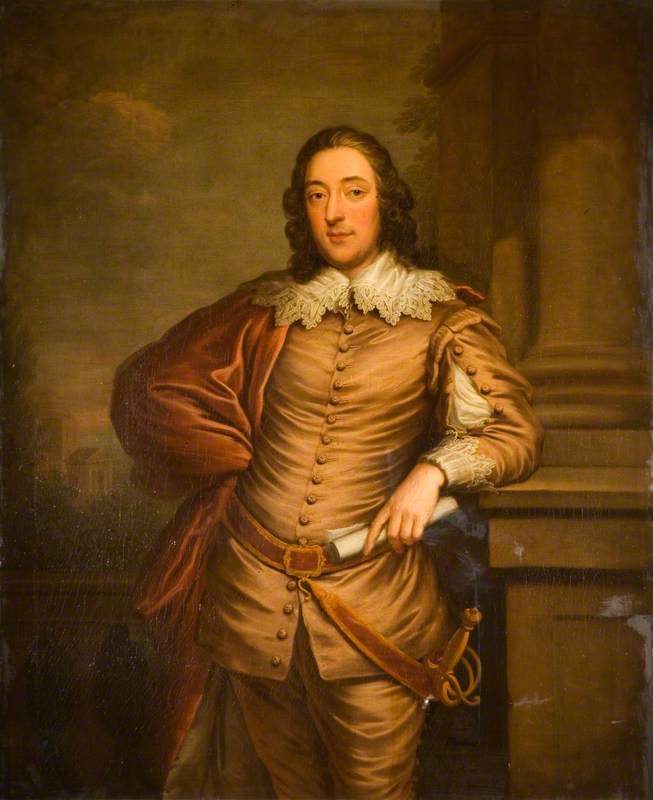
Image credit: Ingestre Hall Residential Arts Centre
The Honourable John Talbot (1711–1756), MP, of Lincoln's Inn Fields 1753
Thomas Bardwell (1704–1767)
Ingestre Hall Residential Arts CentreEducated at Eton College and Magdalen College, Oxford, Talbot travelled in Italy on the Grand Tour in 1772 and 1773, visiting Florence, Siena, Naples, Venice and Rome. There he joined the legion of young English, Irish, and Scottish visitors drawn to Batoni’s studio, and he sat for both the present portrait and a much larger full-length, now in the J. Paul Getty Museum, in September 1773.
For the full-length portrait, which was probably painted first, Batoni depicted Talbot beside the Ludovisi Ares (Museo Nazionale Romano, Rome), a celebrated antique sculpture whose reputation was considerable in the seventeenth and eighteenth centuries. The statue was particularly praised by the German art historian and archaeologist Johann Joachim Winckelmann, and it is probably a reflection of the authority of his opinion that Batoni employed the statue as an accessory in several portraits painted in the period from 1773 to 1782.
The Ludovisi Ares is balanced on the opposite side of the staircase by the so-called Medici Vase (Galleria degli Uffizi, Florence), thought to represent the story of Iphigenia, one of the best-known antiquities in the Villa Medici in Rome in the eighteenth century before its removal to Florence in 1780. Talbot is shown in a rose-pink satin coat open down the front and buff-coloured waistcoat and knee breeches, holding his gold-braided tricorne in his left hand and resting his right on the top of a long tasselled cane, a black-and-white spaniel at his feet looking expectantly up at him.
Talbot, who later sat in the House of Commons and in the House of Lords, installed both portraits in his seat, Ingestre Hall, Staffordshire, where they remained until about 1960 when the house and part of its contents including the half-length portrait were acquired by Sandwell Metropolitan Borough Council and the full-length was bought by the American businessman, art collector and philanthropist J. Paul Getty for his estate at Sutton Place, Guildford, Surrey.
My delight in finding the half-length portrait of Talbot in Art UK’s printed volume brought to mind a favourite remark of Dr Johnson: 'Knowledge is of two kinds. We know a subject ourselves, or we know where we can find information upon it. When we enquire into any subject, the first thing we have to do is to know what books have treated of it. This leads us to look at catalogues…'
Dr Edgar Peters Bowron, Former Audrey Jones Beck Curator of European Art, The Museum of Fine Arts, Houston

